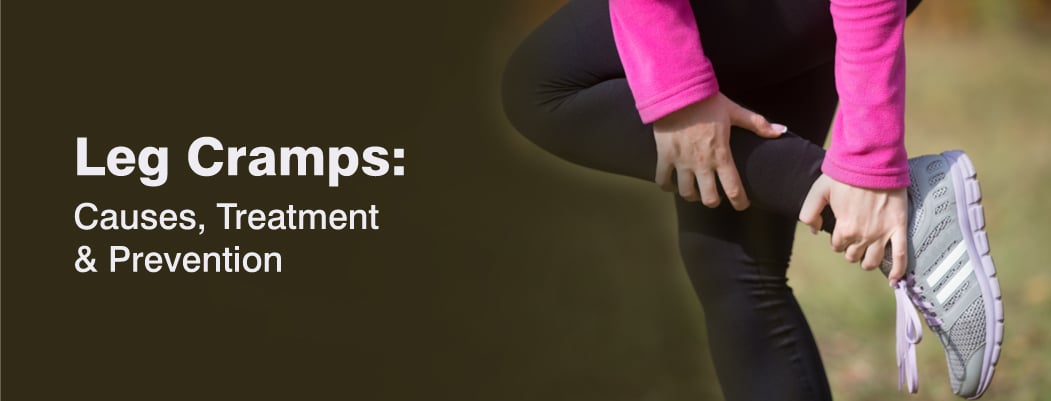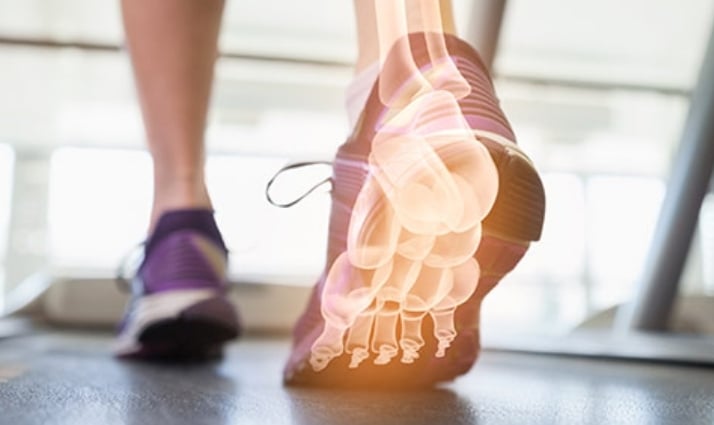How to stop leg cramps immediately?
June 26, 2023

What are leg cramps?
Leg cramps, commonly referred to as nocturnal leg cramps or Charley horses, are a common occurrence characterized by sudden and involuntary muscle contractions. These cramps primarily affect the calf muscles, although they can also occur in the thighs or feet. They can manifest as intense pain, tightness, or a visible bulging of the affected muscle.
Leg cramps can strike at any time, whether during periods of physical activity or at rest. However, they are particularly prevalent during the night, hence the term “nocturnal leg cramps.” Many individuals experience the unpleasant sensation of being abruptly awakened by the sharp pain and muscle tightness associated with these cramps. Consequently, sleep disturbances are a common consequence, leading to fatigue and irritability the following day.
The duration of leg cramps can vary widely. In most cases, they last for a few seconds to a few minutes before subsiding. However, some individuals may endure more prolonged cramps that persist for several hours, causing significant discomfort and hindering mobility.
Who gets leg cramps?
Leg cramps can affect people of all ages and backgrounds. However, certain factors increase the likelihood of experiencing leg cramps. These include older age, pregnancy, certain medical conditions (such as diabetes, kidney disease, and peripheral artery disease), dehydration, electrolyte imbalances (particularly low levels of potassium, calcium, or magnesium), and prolonged periods of inactivity or muscle overexertion.
What are nighttime leg cramps?
Nighttime leg cramps, as the name suggests, occur specifically during sleep or at rest. They often jolt individuals awake, causing sudden pain and muscle tightness. These cramps can disrupt sleep patterns and lead to sleep disturbances, leaving individuals fatigued and irritable the next day.
Symptoms and causes of leg cramps
The symptoms of leg cramps can range from mild discomfort to severe pain. During a cramp, the affected muscle may visibly tighten and become firm or bulging to the touch. Individuals often report difficulty in moving or using the leg until the cramp subsides.
While leg cramps are generally considered harmless, persistent or severe cramps warrant medical attention. It is important to consult a healthcare professional if leg cramps are significantly interfering with your quality of life, occurring frequently, or if they are accompanied by concerning symptoms. Some signs that may indicate the need for medical evaluation include:
- Swelling, redness, warmth, or skin changes in the affected leg.
- Difficulty in walking or moving the leg.
- Muscle weakness or loss of sensation.
- Signs of infection or injury, such as an open wound or fever.
How are leg cramps diagnosed?
To diagnose leg cramps, healthcare professionals typically rely on a combination of medical history, physical examination, and evaluation of potential underlying conditions. They may also order blood tests to check for any electrolyte imbalances or other related abnormalities.
How do I stop leg cramps immediately?
When a leg cramp strikes, there are several techniques you can try to alleviate the pain and stop the cramp immediately. These include stretching the affected muscle, massaging the area, applying heat or cold, using over-the-counter pain relief medications, or using a topical muscle relaxant. Experimenting with different methods can help identify what works best for you.
What kinds of stretches help get rid of leg cramps?
Stretching exercises can provide significant relief from leg cramps. Some effective stretches for preventing and stopping leg cramps include calf stretches, hamstring stretches, quadriceps stretches, and ankle-to-wall stretches. These stretches help relax and lengthen the muscles, reducing the chances of cramps occurring.
How can I prevent leg cramps?
Preventing leg cramps involves adopting certain lifestyle habits. Staying hydrated, maintaining a balanced diet rich in electrolytes (such as potassium, magnesium, and calcium), incorporating regular exercise, and avoiding prolonged periods of inactivity can all help reduce the frequency and intensity of leg cramps.
When and who to consult for leg cramps?
When experiencing leg cramps, it is recommended to consult with a healthcare professional such as a primary care physician or general practitioner. They can evaluate your condition, provide a proper diagnosis, and offer suitable treatment options. If necessary, they may refer you to a specialist such as a rheumatologist or a neurologist for further evaluation. Seeking medical advice is important for accurate assessment and personalized care.
Summary
Leg cramps can be a painful and disruptive condition, but understanding their causes, symptoms, and preventive measures can provide relief and minimize their occurrence. Immediate relief can be achieved through stretching, massaging, and applying heat or cold to the affected muscle. By adopting a healthy lifestyle, staying hydrated, and incorporating regular exercise, leg cramps can be prevented. However, if leg cramps are severe, persistent, or associated with concerning symptoms, it is important to consult a doctor for proper evaluation and guidance. Seeking medical advice ensures appropriate diagnosis and management of the condition, leading to effective relief and improved quality of life.
People also ask
1. What is the quickest relief for leg cramps?
To quickly relieve leg cramps, you can try the following methods: gently massaging the cramped muscle, applying heat with a warm towel or heating pad, using an ice pack, taking a hot bath or shower, or taking a non-prescription pain reliever such as ibuprofen or acetaminophen. Experimenting with different remedies will help determine which one provides the quickest relief for you.
2. What is the fastest way to stop a cramp?
The fastest way to stop a cramp is by stretching the affected muscle gently. Straighten your leg and flex your foot toward your knee, or stand up and place weight on the affected leg while keeping it straight. Additionally, applying heat or cold, massaging the area, or using a muscle relaxant spray can also provide quick relief.
3. What is the best drink for leg cramps?
Drinks rich in electrolytes, such as potassium and magnesium, can help prevent and relieve leg cramps. Some excellent options include coconut water, sports drinks, or homemade electrolyte solutions made with water, lemon juice, honey, and a pinch of salt. Consuming these beverages regularly can aid in maintaining proper electrolyte balance and reducing the likelihood of leg cramps.
4. What is the best way to stop leg cramps at night?
To stop leg cramps at night, you can try the following methods: performing stretching exercises before bed, keeping your legs elevated with a pillow, ensuring proper hydration throughout the day, using a heating pad or hot water bottle, or even taking a warm bath before sleep. Experiment with different approaches to find the most effective method for your specific situation.








